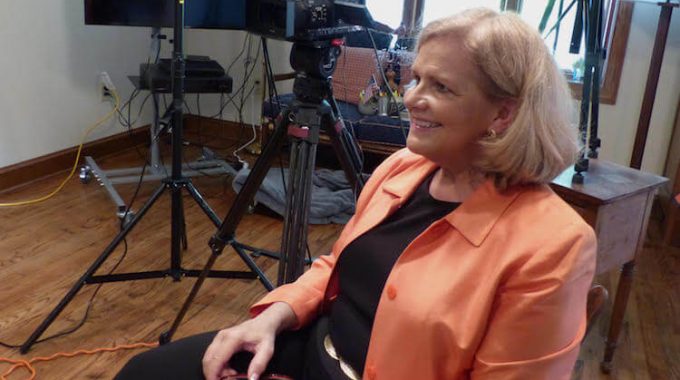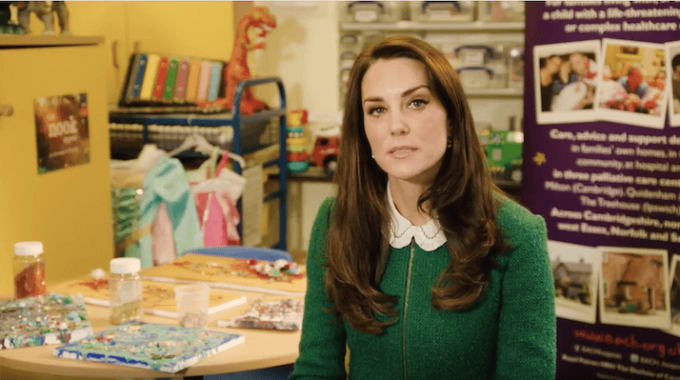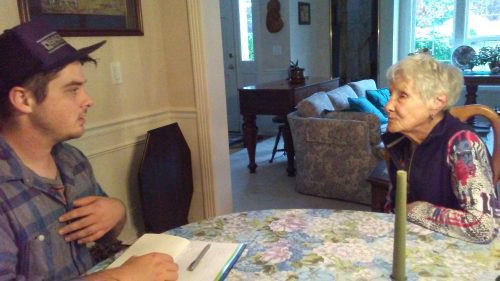
Life Stories Program for Hospice Patients Celebrates and Preserves Lives and Memories
Every life has a story; every person wants to leave a legacy. Some stories are shared and remembered while others are lost to history. For patients at Hospice of the Shenandoah located in Fishersville, VA, their stories stand to live on with more permanence. One hospice volunteer with a background in videography has made it her mission to help hospice patients share their life stories and leave behind a legacy for their loved ones. Connie Doebele, a former producer for the C-SPAN network, interviews hospice patients about their lives, records the interviews, and creates DVD’s for the families. Her work is helping hospice patients and their families to celebrate and preserve their lives and memories.
Connie Doebele was drawn to volunteering in hospice through her own experience with loss. Within the period of one year, she lost both her mother and sister to cancer. Her mother had been a hospice volunteer, and Connie wanted to carry the proverbial torch in her stead. “[My mother] told me that if her health ever improved, the one thing she wanted to get back to doing was being a Hospice volunteer. I never forgot that,” Connie explained to 1-800-HOSPICE™. “My sister was subsequently a hospice patient and was lovingly cared for in her home in rural Nebraska until her death. So this is how I keep their memory alive.”
For 25 years, Connie worked in the Washingtion, D.C. area as a producer and on-air host for C-SPAN. In 2011, she left the network to start her own business, called Your Life Story Videos, which sought to document and save family stories for future generations. “The business was actually sparked by my volunteer work with Hospice,” Connie said. It was a small leap to translate her videography skills into her volunteer work. To date, she has create life stories for a dozen families.
“When I go into an interview, I try to bring the Hospice spirit,” Connie explained. “We are there to help them make this transition in a meaningful and dignified way. Part of that is asking them what might appear to be difficult or tough questions, such as ‘How do you want to be remembered?’ or ‘What do you hope you gave your children?’ But these are questions that need to be asked so that the patient has the opportunity to reach beyond time into future generations.”
The response from families has been extremely positive. “Several families have sent me notes and one even a small contribution to help me pay for the DVDs for future Hospice patients. One particular patient passed away the day after I had delivered the DVDs to the family. The father called the next day to say that they were watching the interview in the aftermath of her death and how much it meant to them,” Connie said.
The feedback from families helps to fuel Connie’s continuing work. “There are two voicemails of appreciation on my cellphone that I refuse to delete. Whenever I am feeling a little down about anything, I just listen to those voicemails,” she said.
Connie has heard some incredible stories through her interviews. From a woman who struggled through the war effort in the 1940’s to raise her children with no money and no job and a husband abroad at war, to a veteran who walked with Patton through the streets of Paris after its liberation in WWII, each story she’s heard contained fascinating elements that otherwise might have been lost to history. “There have been several incredible moments,” Connie said.
After seeing how beneficial the Life Stories project has been to hospice patients and their families, Connie hopes other hospices across the country will consider implementing similar life stories programs. She has volunteered to answer questions for hospice volunteers interested in creating a Life Stories program, or hospice managers or directors interested in coordinating such a program. Contact us to learn more. Here is Connie’s advice on how to get started with a Life Stories program:
- Find a hospice volunteer who has some background in media or communications and ask them if they would be interested in creating life stories.
- Find a small camera to use. Ask your local television stations if they have an older camera they could donate or sell at a low cost.
- Always use a tripod. Don’t bother with purchasing additional lighting. Use natural light.
- Develop a letter about the Life Story program that is given to the patient’s family when the DVDs are delivered. It may encourage them to further support the Life Stories program.
- Make sure the program is clearly explained to nurses and social workers so that they can offer it to patients. Time is often short and and interest in the program needs to be followed up quickly and not get bogged down.





